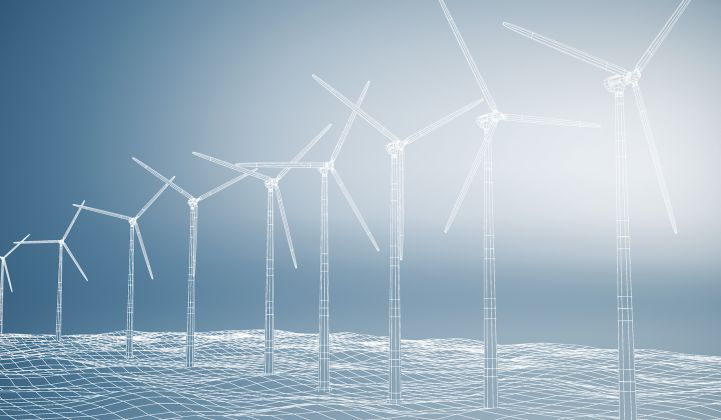We are at the dawn of an exciting new day for offshore wind in the United States.
For far too long, offshore wind was a promising concept rather than an actual industry in this country. But today, states up and down the East Coast and private industry are making substantial commitments to this new, clean energy resource — and for good reason.
The cost of offshore wind has fallen dramatically in recent years in Europe and is cost-competitive with fossil or nuclear generation in some markets. Here in the U.S., a recent contract for offshore wind has been proposed at a cost that is approximately half of what industry researchers predicted just two years ago. The industry has also improved its ability to deliver even larger amounts of clean power than in the past, thanks to advancements in wind turbine technology. The next generation of turbines is capable of powering a typical home for one year with a single rotation of its blades.
Offshore wind has become a major global industry with over 18,000 megawatts of offshore wind capacity installed in 17 countries around the world — enough to power the equivalent of nearly 9 million average homes in the New York/New Jersey area. Offshore wind can support as many as 160,000 U.S. jobs by 2050, a statistic that shows enormous promise for our efforts to grow an industry here at home.
New York, under Governor Andrew M. Cuomo, and New Jersey, under Governor Phil Murphy, have made the two largest commitments to offshore wind in the country. New York has one offshore wind project already under contract and plans another major procurement of approximately 800 megawatts later this year as a first step toward the state’s target of 2,400 megawatts. Over the past six months, New Jersey has taken several critical steps to realize its immediate plans to announce a 1,100-megawatt solicitation and achieve its ultimate goal of 3,500 megawatts by 2030.
Similarly, Massachusetts, Rhode Island, Connecticut and Maryland have all awarded contracts to deliver offshore wind to their residents. Each of our states are working closely with stakeholders to ensure we are smartly leveraging public dollars and new resources in this promising U.S. industry. Offshore wind energy has the potential to contribute significantly to a clean, secure energy mix — and to be competitive with traditional energy at affordable prices.
This collective action by states is good news for our ability to reach our nation-leading clean energy and greenhouse gas reduction targets, good news for cleaner air along the densely populated East Coast of the U.S., and really good news for our economies. Offshore wind represents a once-in-a-generation opportunity to create an entirely new heavy marine, assembly and manufacturing industry on the East Coast, bringing potentially tens of thousands of good new jobs, an opportunity to revitalize aging port infrastructure, and a chance to create a domestic offshore wind supply chain.
U.S. Secretary of the Interior Ryan Zinke has recognized the potential of the offshore wind industry to create good jobs. This bipartisan support for a unique American economic opportunity is the type of agreement we could use more of, and it enhances our collective chances for success.
Here is how it works: First, more projects coming to the U.S. market sooner means the offshore wind industry will scale faster and costs will fall even faster than they already have, creating a virtuous cycle. The lower costs go, the more appetite there will be for these new cost-effective projects. For any state looking to procure offshore wind, we will have better buying power in numbers, and competition among project developers to win each new contract is the single best way to drive down costs for the benefit of our residents.
Second, more projects being developed means the U.S. domestic supply chain will materialize faster. The goal is to bring the European industry stateside, but it takes a large market opportunity to attract those types of massive investments. No single state can create such a market on its own, and the faster we can accelerate the creation of the U.S.-based supply chain, the faster jobs will grow in every state with projects.
Third, the offshore wind industry will need to utilize port facilities and workers along the entire East Coast in order to cost-effectively fulfill our collective market demand. Given the size (three times taller than the Statue of Liberty) and complexity of manufacturing wind turbines (over 8,000 parts) and the necessary staging and installation required, all states will win from the jobs created and investments in our local economies.
Much is made about the fact that states are racing one another to lead the pack and to capture the industry investments that we all expect — and we should be. Offshore wind projects can pay economic dividends beyond a more diverse energy mix and reduced carbon emissions, and states should be aggressively seeking investments that will benefit local workers and U.S. companies. But this is not a winner-take-all competition. Each announcement of a new project or procurement is good news for everyone, and we should be cheering the collective progress of this industry.
States can and should put their best foot forward to attract new offshore wind investments. But to claim the prize we are really after — cost-competitive clean energy that is produced by thousands of American workers in new, good-paying jobs — we need as many competitors as possible invested in winning the race.
***
Alicia Barton is president and chief executive officer of the New York State Energy Research and Development Authority; Joseph Fiordaliso is president of the New Jersey Board of Public Utilities.




